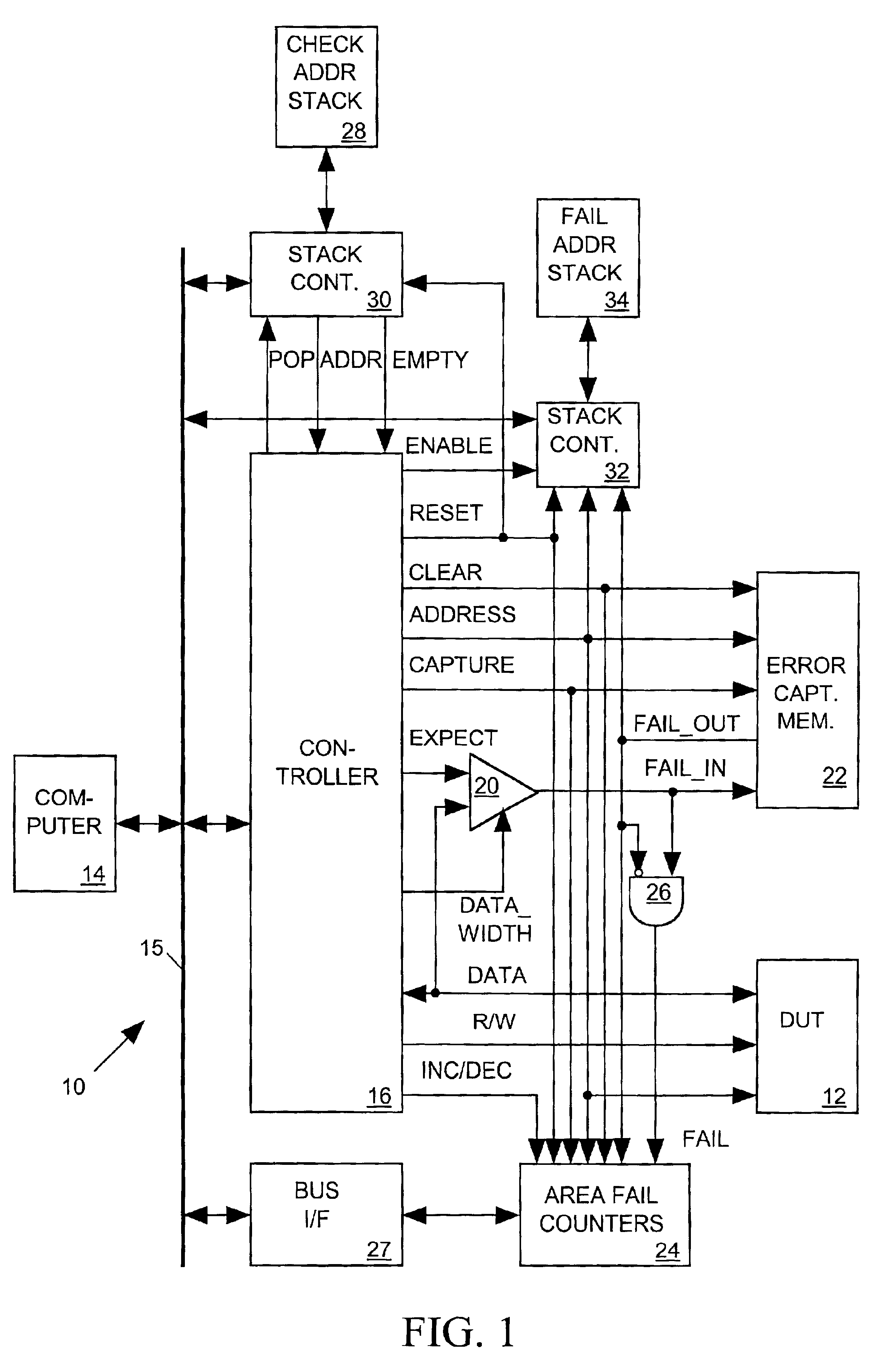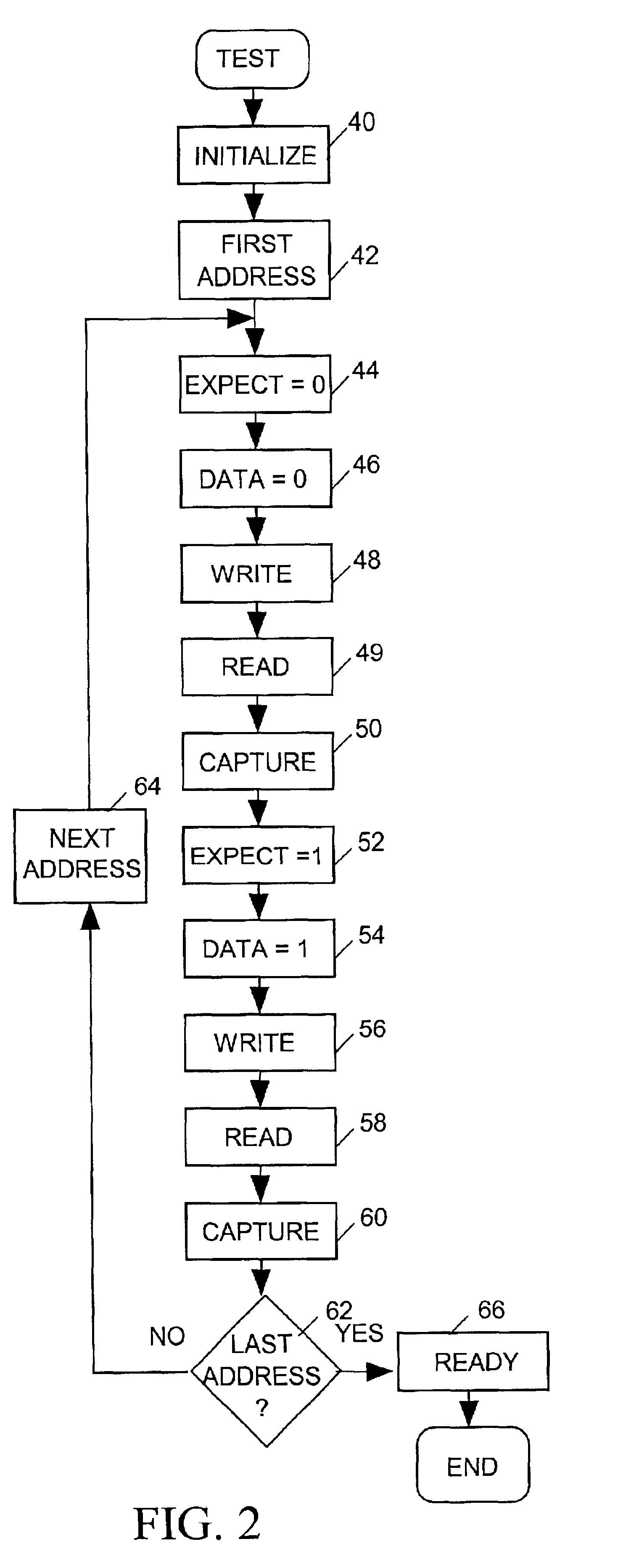Apparatus for testing memories with redundant storage elements
a technology of memory and storage elements, applied in the field of apparatus for testing memories with redundant storage elements, can solve the problems of not having enough spare rows and columns to replace the three cells that are not in the first row, a relatively long time for the computer to read all the data out of the error capture memory, and a substantial amount of time for the computer to read the captured error data. , to achieve the effect of reducing the amount of ecm data, efficient selection of the corresponding areas, and reducing the amount of tim
- Summary
- Abstract
- Description
- Claims
- Application Information
AI Technical Summary
Benefits of technology
Problems solved by technology
Method used
Image
Examples
Embodiment Construction
FIG. 1 illustrates in block diagram form a memory tester 10 in accordance with the present invention for testing a random access memory device under test (DUT) 12. DUT 12 includes an array of rows and columns of memory cells, each cell having a unique combination of row and column addresses and each cell storing a word of one or more data bits. DUT 12 also includes several spare rows and / or columns. When DUT 12 has defective memory cells, rows or columns containing those defective memory cells can be replaced with the spare rows or columns. The replacement may be carried out, for example, using a laser or other means to modify the RAM so that a spare row or column is addressed in lieu of a row or column containing the defective cell. Memory tester 10 tests DUT 12 to determine which cells of DUT are defective and provides data indicating test results to a computer 14 via a conventional computer bus 15. Computer 14 analyzes the data to determine how to allocate the DUT's spare rows an...
PUM
 Login to View More
Login to View More Abstract
Description
Claims
Application Information
 Login to View More
Login to View More - R&D
- Intellectual Property
- Life Sciences
- Materials
- Tech Scout
- Unparalleled Data Quality
- Higher Quality Content
- 60% Fewer Hallucinations
Browse by: Latest US Patents, China's latest patents, Technical Efficacy Thesaurus, Application Domain, Technology Topic, Popular Technical Reports.
© 2025 PatSnap. All rights reserved.Legal|Privacy policy|Modern Slavery Act Transparency Statement|Sitemap|About US| Contact US: help@patsnap.com



